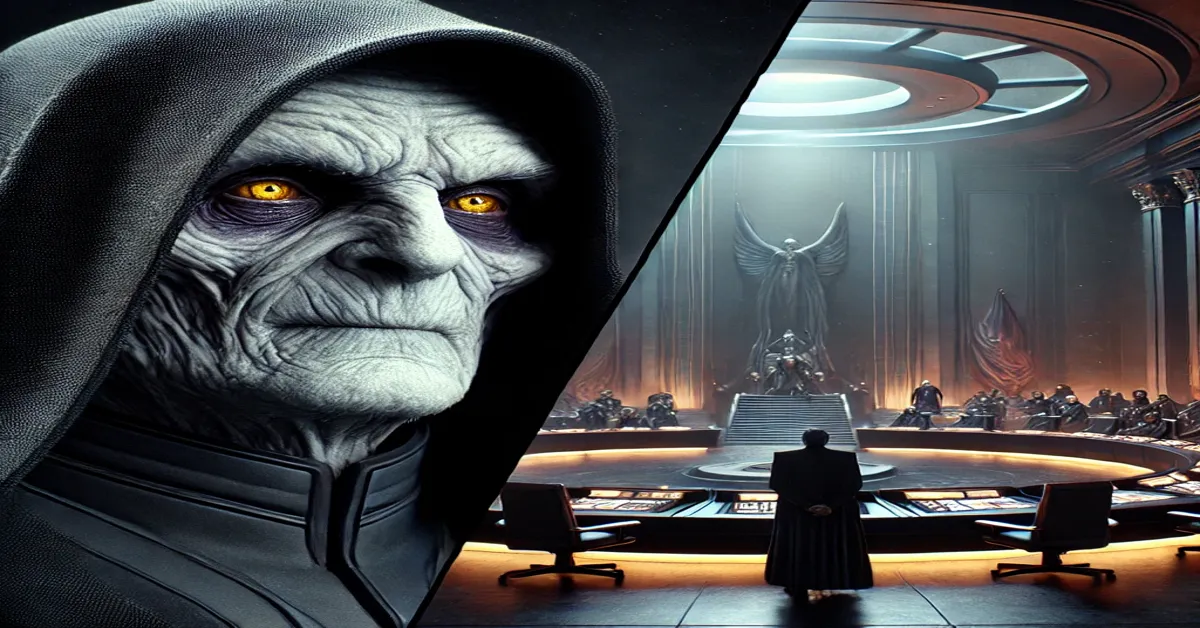Sheev Palpatine is one of the most iconic characters in the Star Wars universe. From his humble beginnings as a senator to his rise as Emperor, he showcases a masterclass in political maneuvering that leaves audiences captivated. With a façade of charm and diplomacy, he hides a darker agenda driven by ambition and power.
But how did this seemingly unassuming man transform into the galaxy’s ultimate villain? The journey of Sheev Palpatine is a tale filled with cunning strategies, betrayals, and an insatiable desire for control over the galaxy. Dive into this complex character’s history and explore how he manipulated those around him to achieve his goals. Whether you’re new to Star Wars or a long-time fan, understanding Sheev Palpatine offers deep insights into politics, power dynamics, and what it takes to rule—both in fiction and reality.
Palpatine’s transformation into Emperor was marked by calculated moves that silenced dissent and centralized authority under his rule. His mastery in politics serves as both a cautionary tale and an intriguing example of how far one can go when driven by unrelenting ambition.
Character history
Sheev Palpatine, a name synonymous with political cunning and dark ambition, first emerged in the Star Wars saga as a seemingly benign senator from Naboo. His public persona was that of a humble servant dedicated to peace and diplomacy. However, beneath this facade lay an insatiable thirst for power.
Palpatine’s rise began during the tumultuous times of the Galactic Republic. He skillfully navigated political landscapes while manipulating key figures like Jedi Master Qui-Gon Jinn and Padmé Amidala. Behind closed doors, he orchestrated events that would plunge the galaxy into chaos.
As the Clone Wars erupted, Palpatine seized control under the guise of protecting democracy. He declared himself Chancellor and rapidly expanded his authority, exploiting fear to secure loyalty from both allies and enemies alike. With each passing day, he drew closer to his ultimate goal: absolute dominion over the galaxy.
His transition from senator to Emperor marked one of history’s most monumental shifts in power dynamics. Through manipulation and deceit, Sheev Palpatine transformed not just himself but also the very fabric of galactic governance—forever altering its course amid shadows and treachery.
Creation and development
Sheev Palpatine’s creation is a fascinating journey through the minds of George Lucas and his team. Initially introduced in “Star Wars: Episode I – The Phantom Menace,” he was designed as a cunning politician with dark ulterior motives. This complexity added layers to what could have been a one-dimensional villain.
The character evolved significantly throughout the prequel trilogy, showcasing how ambition can corrupt even the noblest intentions. His transformation from Senator to Sith Lord unfolded gradually, reflecting real-world political machinations. Each step revealed his masterful manipulation of those around him.
Palpatine’s development also benefited from strong performances by Ian McDiarmid, whose portrayal brought depth and charisma to Sheev. The actor infused the role with an unsettling charm that captivated audiences while hinting at underlying malevolence.
Writers expanded on Palpatine’s backstory in various media beyond films, including novels and comics within Star Wars Legends. These explorations detailed his apprenticeship under Darth Plagueis and further delved into his rise within the Galactic Senate, enriching our understanding of this iconic character known for both brilliance and ruthlessness.
Appearances
Sheev Palpatine, the master manipulator of the Star Wars saga, has left an indelible mark through his numerous appearances across various media. From his first appearance in “Star Wars: Episode I – The Phantom Menace,” he subtly orchestrates events that lead to the rise of the Galactic Empire. His portrayal as a seemingly benign senator masks darker intentions.
In “Episode II – Attack of the Clones” and “Episode III – Revenge of the Sith,” Palpatine’s true power emerges. He plays both sides against each other during the Clone Wars, demonstrating his cunning political acumen. This duality captivates audiences while highlighting his strategic brilliance.
Beyond films, Sheev Palpatine appears in animated series like “Star Wars: The Clone Wars” and “Star Wars Rebels.” These shows further explore his impact on galactic politics and introduce viewers to new layers of his character.
Video games such as “Star Wars: Battlefront” also feature him prominently, allowing fans to engage with this complex figure on various platforms. With each appearance, Palpatine solidifies himself as one of cinema’s most iconic villains.
READ MORE:Teresa Fidalgo: Truth Behind the Viral Internet Legend
Star Wars Legends
Star Wars Legends offers a rich tapestry of stories that expand the lore surrounding Sheev Palpatine. Originally portrayed as a cunning senator, his transformation into Emperor is masterfully explored in these narratives. The Legends timeline delves deeper into his machinations and rise to power, showcasing how he manipulated both friends and foes.
In this alternate universe, we see Palpatine orchestrating events with an iron grip. His use of the dark side isn’t just about raw power; it’s also about psychological manipulation. Sith’s teachings are elaborated upon, revealing how he cultivates apprentices like Darth Maul and later Anakin Skywalker.
These tales highlight Palpatine’s strategic brilliance in navigating galactic politics. He plays various factions against each other while maintaining a façade of civility and diplomacy. This complexity adds layers to his character—he is not merely a villain but an intricate architect of chaos.
Moreover, Star Wars Legends deepens our understanding of the Sith Order itself through Palpatine’s ambitions. His pursuit for immortality reflects themes present throughout Star Wars—a quest for ultimate control at any cost. The richness of these stories makes Sheev Palpatine an enduring figure in the galaxy far, far away.
Characterization
Sheev Palpatine embodies the archetype of a cunning strategist. His dual identity as a senator and Sith Lord reveals layers of complexity that keep audiences captivated. On the surface, he presents himself as a charismatic and diplomatic leader, always concerned about the Republic’s wellbeing. This façade hides his ruthless ambition and desire for power.
What sets Palpatine apart is his ability to manipulate those around him. He thrives on deception, using charm to gain trust while orchestrating chaos behind the scenes. His mastery of persuasion allows him to turn allies into enemies without them even realizing it until it’s too late.
His calm demeanor contrasts sharply with his inner darkness, creating an unsettling depth to his character. The transition from Senator to Emperor showcases both intelligence and ruthlessness in equal measure. Every move is calculated; every word chosen carefully.
Palpatine’s characterization extends beyond mere villainy—he represents the seductive nature of power itself. Audiences can’t help but be drawn in by this complex figure who walks the fine line between benevolent leader and malevolent tyrant.
READ MORE:Brook B. Taube: Leadership and Philanthropic Insights
Pop culture
Sheev Palpatine has carved a unique niche in pop culture, becoming an icon of villainy. His evolution from a mere senator to the Emperor of the Galactic Empire resonates deeply with fans worldwide. This transformation showcases not just power but also cunning manipulation and political strategy.
Merchandise featuring Sheev Palpatine is ubiquitous, ranging from action figures to clothing items. Fans often embrace his dark persona, sporting memorabilia that celebrates his enigmatic nature. The iconic phrase “Do it,” has transformed into memes, adding layers to how he’s perceived online.
The character’s presence extends beyond films into books and video games. He appears as a central figure in various storylines within Star Wars Legends and canon materials alike. These narratives explore his background further, shedding light on the complexity of his character.
Palpatine’s influence can be seen in modern storytelling too. Many creators draw inspiration from his archetype: the manipulative politician who hides malevolent intent beneath a veneer of respectability. This enduring legacy ensures that Sheev Palpatine remains relevant in discussions about power dynamics within society today.
In popular culture
Sheev Palpatine’s influence stretches far beyond the Star Wars universe. The character has become an iconic representation of political ambition and manipulation. His rise from a seemingly benign senator to the dark Emperor resonates with audiences, showcasing the dangers of unchecked power.
In popular culture, references to Sheev Palpatine abound. He is often cited in discussions about authoritarianism and the fragility of democracy. Memes featuring his quotes or expressions have gone viral, bringing new life to his character for younger generations who may not be familiar with the films.
His portrayal by Ian McDiarmid has left a lasting legacy that continues to inspire parody and homage across various media platforms. From animated series to video games, Sheev Palpatine remains a definitive figure representing cunning strategy and moral ambiguity.
Moreover, he serves as an archetype for villains in contemporary stories—a reminder that beneath charm can lie treachery. As long as there are tales told of power struggles, Sheev Palpatine will endure as one of its most compelling characters.
READ MORE:ATFBORU: Framework for Organizational Growth & Success









